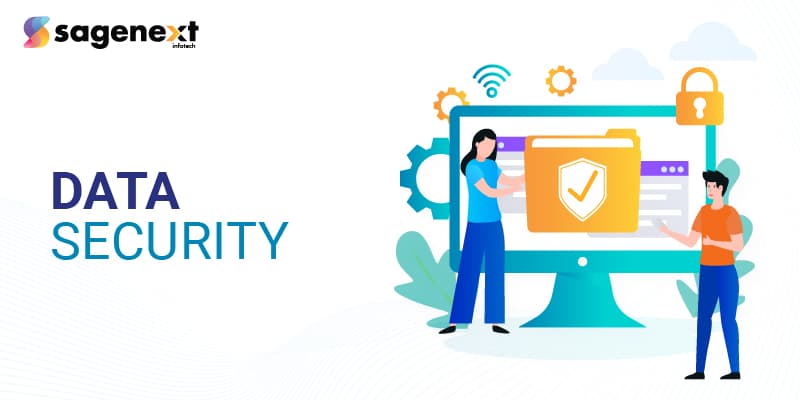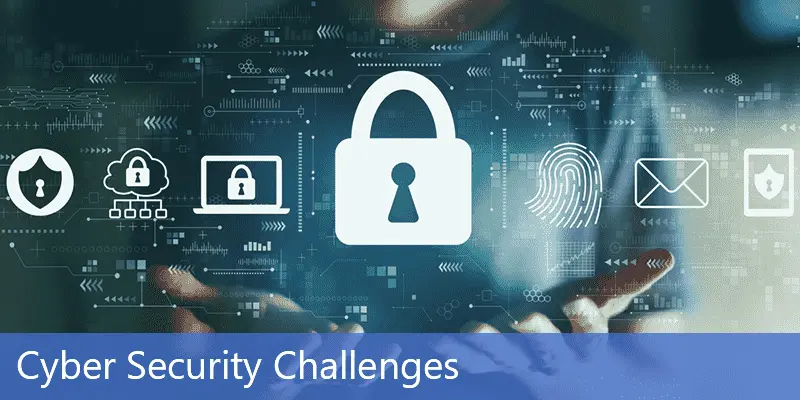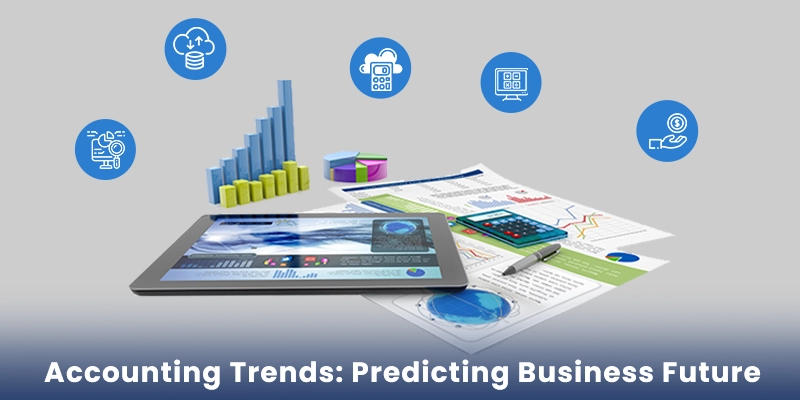
Must Read If Data Security Is Your First Concern
The landscapes of cyberthreats continue to evolve as more high-profile attacks and breaches are making the headline. Where the global public cloud services market forecasts a financial growth from $227.8 billion in 2019 to $266.4 billion in 2020, which is a spike of 17%; data security still remains a concern for us. Data breaches not only adversely affect the company’s reputation, but the estimated cost to rectify it is also huge – near $4 million (global level).
These data are frightening and most of us are also taking countermeasures to save our data. However, with each passing day, more and more cybersecurity threats are appearing and are looming on the businesses.
Interesting Stats on Breaches and Data Security
- A 2019 Data Breach Investigation Report highlighted that small businesses suffer from around 43% of data breaches. This actually results in data security concerns in top IT companies in 2020
- Data security is considered the top IT priority by 74% of enterprises
- As per Small Business Trends, nearly 61% of organizations have reported cyber incidents in 2019
- Out of 4, only 1 small business is prepared for cyber attacks (Small Business Trends)
- Around 4.1 billion reports were exposed due to data breaches in the first half of 2019 (Forbes)
- 50% of employees are unaware of remote-work cybersecurity policies
- More businesses are opting for cyber insurance, leading the percentage to be 41% ( Small Business Trends)
- Survey reports shared by Microsoft and Intuit states that 75% of business professionals, especially accounting firms agree to better safety and service availability after opting for cloud services
- 39% believes data security resiliency can be boosted by upgrading the IT (IDG Security Priorities Study)
- 69% of organizations stated data security to be one of the top concerns of 2020 (Small Business Trends)

4 Serious Emerging Cybersecurity Threats
Where more and more organizations are acknowledging the importance of data security, it is imperative that everybody is aware of the new cyber threats.
1. Cross-site Scripting
In the development cycle, most companies try to avoid XSS (cross-site scripting) attacks. According to Forrester, bug bounty programs recognized 21% of vulnerabilities in the XSS areas.
The adversaries are allowed by the XSS attacks to enter in the business websites and carry out untrusted codes directly into the browser of the victim. In this way, cybercriminals can easily interact with the user (victim) and steal the cookie information. With this, without any credentials, they can hijack the website. This detail (cookie data) is the same one that is used for authentication purposes on a website.

2. Geopolitical Risks
The recent ban on 59 applications by the Indian Government has opened a frightening aspect regarding data security. The data of the particular country (India) were being saved in the data centres in China without their knowledge or permission. The USA also agrees to this alarming factor and a majority of organizations have started considering checking the location of servers where the company data is or will be stored.
With regulations like GDPR and the plausible emerging threats from Iran, North Korea, China, and Russia, companies are beginning to analyze the vendor’s security controls and intricacies of it. To avoid geopolitical data security risks, it is best if your selected vendor or service provider belongs to the same country as yours.
For instance, most USA based QuickBooks hosting servers have data centres located in the same country so that the data remains within the same geographical boundary.

3. IoT (Internet of Things) Device Threats
Where data is getting updated every day, companies are also adding various security solutions like smart container ships and security cameras. But when it comes to the Internet of Things or IoT, most companies do not consider the importance of maintenance. To save your company from different types of cyberattacks, you must start managing your IoT devices and implement security and updating processes.

4. Cryptojacking
One of the biggest threats that are threatening businesses’ impact for the past two years is ransomware. This malicious software exploits the basic vulnerabilities that occur due to a lack of proper backups or network segmentation.
Currently, a majority of threat actors are using similar ransomware variants that were used initially used to hack and block data against ransom for the organization’s system or resources. The methodology is mainly used for mining illegally into cryptocurrency. This practice is known as crypto mining or cryptojacking.
These strains of malware are not like NotPetya or Petya (ransomware) that work openly. Instead, cryptojacking silently runs in the background and mines for cryptocurrency.
If cryptojacking rises, this means your resources, computers, and application systems, which are used for cryptomining can be attacked.

Practices to Extra Secure Your Data
1. Use of Multi-factor Authentication
MFA or multi-factor authentication is one of the top-notch cybersecurity best practices that offer your data an added security. This authentication mechanism simply uses two factors or evidence pieces and only after authenticating the verification of the factors, it allows you to access the data.

2. Cyber-Hygiene Habits
Performing elementary security processes can help a lot to protect companies from being preyed upon by cyber and phishing attacks. You can follow any of the cyber-hygiene habits to practice data security measures.
- Enforce MFA/ 2FA and strong password policy procedures
- Encrypt business data and back it up
- Update OS with latest security patches
- Run vulnerability scans
- Keep your antivirus updated
- For authorized users, Enforce compartmentalized user permissions
- Regularly update blacklisted and whitelisted user lists
- Ensure properly configured and deployed firewalls and routers

3. Frequent Cybersecurity Risk Assessment
To recognize and discover data prone areas from where hackers can easily enter and access data, you need to conduct a frequent cybersecurity risk assessment. When you perform such assessments, you can identify the vulnerability and mitigate those risks. A few of the risks that your company can be harmed with are:
i. Compliance risk, which is related to government regulation violations
ii. Transactional risk, which is related to product or service delivery issues
iii. Operational risk, which is related to involves failed internal processes
iv. Reputational risk, which is related to a result of negative public opinion

Everyone must understand the actual reason the prioritize data security above every other business aspect. If you follow cybersecurity statistics and trends, you can help your company to be secure and free from malicious attacks. We understand the importance of data sensitivity and always advice you to be extra cautious regarding data security.
 written by
written byAbout Author






